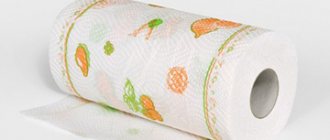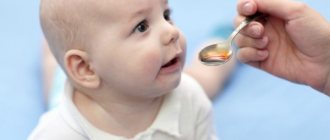In children of different ages, it is quite common to observe an increase in body temperature. In young children, an increase in temperature can be caused by teething and other reasons, in older children - by infectious diseases, the development of inflammatory processes, the presence of neuralgic diseases, etc. However, often a high temperature in a child is not accompanied by other symptoms and therefore it is extremely difficult to determine the true cause of its occurrence. Many parents are concerned about the question of why their child often has a fever and what to do in such situations? It is worth understanding these issues gradually.
Is elevated temperature good or bad? When should you lower your temperature?
Fever is usually a frequent accompaniment of infectious diseases in children and an important reason for visiting a doctor. However, it must be remembered that fever is not an independent disease. This is just a symptom of the underlying disease, in other words, it is the body’s reaction to the occurrence of an infection.
At elevated body temperatures, viruses and bacteria are killed by heat; at the same time, the body produces antibodies and interferon, which help the body fight infection. However, high body temperature causes a lot of anxiety for parents and discomfort for the little patient: it disrupts the normal functioning of the heart, blood vessels, nervous system, digestive and respiratory organs.
While a child with a fever feels reasonably well, it should not be lowered, because this is how the body fights infection. Unfortunately, each child’s body reacts individually to an increase in temperature. One sick child feels unwell and is very feverish, another willingly plays, communicates, does not lose his appetite, the third becomes apathetic and irritable, refuses to eat.
Particular attention should be paid to the presence of fever in a child:
- with chronic heart diseases - heart defects, arrhythmias, etc.;
- lungs - asthma, chronic bronchitis, etc.;
- central nervous system - epilepsy, encephalopathy, etc.
Preventing body temperature from rising above 38.9°C is also recommended for children who have had febrile seizures, although there is no direct relationship between the degree of temperature change and the risk of seizures.
Febrile seizures at elevated temperatures
What temperature is normal for children
The normal temperature for an adult is 36.6 degrees. In children, this indicator is different and amounts to 36.8-37.5 degrees. If the thermometer reading is more than 37.5 degrees, this may indicate the presence of a disease. To find out the causes of the disease, you should consult a doctor. Until the causes of the high fever are established, it is strictly forbidden to give the child various medications, especially antibiotics. The only thing that parents are allowed to do is to resort to the use of antipyretic drugs if the thermometer mark exceeds the reading of 38 degrees.
For children of different ages, the normal temperature is different, which depends not only on the physiological characteristics of the body, but also on factors such as the normalization of the thermoregulation process. In newborns and infants, a body temperature of 37.5 degrees is considered normal. For children over one year old, normal indicators are considered to be fluctuations in the thermometer ranging from 36.8 to 37.3 degrees. The older the child gets, the more balanced the temperature fluctuations become.
It is important to know! In order to determine the normal temperature of a child, you will need to take 3-5 measurements over three days, then add them up and divide them by the total number of measurements taken. Having received the average value, the mother can focus on deviations in the child’s health.
How to reduce the body temperature of a child with fever without medication?
When it comes to fever in babies and children, the only reliable way to reduce the temperature is with medications. All other antipyretics, such as cooling, can be used as an adjuvant.
Here are several ways to reduce your child’s body temperature and alleviate his condition:
- Cooling involves rubbing with water slightly cooler than the patient's body temperature. The use of alcohol or vodka is under no circumstances recommended.
- To reduce the temperature by physical means, it is recommended to apply compresses moistened with cold water in the area of large blood vessels - the groin, armpits, sides of the neck.
- There is no need to cover the baby with a warm blanket, just cover him with a thin blanket.
- A patient with fever is advised to stay in a cooler room with a temperature of around 18°C.
- It is very important that a sick baby drinks enough fluids, because a lack of fluid in the body can maintain a fever. A sick child should be offered his favorite soft drinks from time to time.
- The child's physical activity should also be limited, since movement and active muscle work increase heat production in the body.
What could be the reasons?
Almost all gradations of hyperthermia are caused by an infection - viral or bacterial. And if a temperature of 38 in a three-year-old child occurs without any symptoms at all, then the cause is most likely a bacterial disease, but this does not negate the mandatory diagnosis. However, viruses cause 10 times more infections than bacteria.
Cold or flu
Colds, flu and other acute respiratory viral infections and acute respiratory infections are the most common cause of hyperthermia at a young age. A child's temperature may be the only symptom during the first 24 hours. The typical onset of viral symptoms—a runny nose, cough, and sore or red throat—can sometimes linger, although this does not happen often.
Bacterial infections
Bladder infections are the most common cause of a temperature of 38 in a 3-year-old child with no other symptoms. But most often such infections occur in girls.
Streptococci
They can cause a small number of diseases with similar names. Usually, with a streptococcal infection, the child’s throat is the first to suffer. Rarely, they are also a common cause of unexplained fever.
Meningitis
If the temperature is caused by meningitis, then this is already very serious. The main symptoms are neck stiffness, headache and confusion. Children as young as 3 years old are often lethargic or so irritable that they cannot be comforted.
Meningitis is insidious in that it can occur in children with a very different set of symptoms and signs without any pattern. However, very rarely this disease occurs without other symptoms - most often there is a headache and neck stiffness, and the child’s temperature itself rises above 39 degrees.
If meningitis is not treated in the early stages, the child can suffer severe brain damage, including death.
Overheat
When overheating, the temperature of a 3-year-old child directly depends on the degree of overheating, but usually it is low - the one we are considering, 38℃. By overheating here we also mean sunstroke.
The temperature returns to normal within a few hours after moving to a cooler place. May also occur during strenuous exercise. Hyperthermia goes away quickly with rest and drinking plenty of fluids.
Roseola
This is the classic cause of unexplained fever in young children. Most children develop roseola between the ages of 6 months and 3 years. The cause of the disease is the human herpes virus.
Most often, roseola, in addition to a temperature of 38, is accompanied by other symptoms:
- rash is the main sign of the disease: at first, small pink spots usually appear on the chest and abdomen; then the rash spreads equally on both sides of the body and then to the face and other parts of the body;
- classic feature in a child at 3 years old: 1, 2, 3, 4, but usually no more than 5 days of high fever without rash or other symptoms,
- the rash most often begins 12-24 hours after the temperature drops,
- the rash itself lasts from 1 to 3 days,
- When the rash appears, the child will already feel well.
What medications to give to children with fever
If a sick child's body temperature rises above 39°C, it must be lowered immediately and effectively. Currently, the use of paracetamol or ibuprofen is recommended for the treatment of fever in infants and children.
Ibuprofen has a triple effect: it suppresses fever, relieves pain and inflammation. This is very important when treating a child with “traditional” infectious diseases, who, in addition to fever, has other symptoms: redness of the throat, pain in the ears, muscles or joints.
Ibuprofen has a rapid onset of action: after oral administration, the effect occurs within 15-30 minutes and lasts 6-8 hours. The recommended dose of ibuprofen is 7-10 mg/kg, which is effective in reducing fever.
Ibuprofen
Last but not least, it is quite well tolerated by infants and young children. Therefore, this medicine is considered one of the first-line drugs for fever, pain and inflammation in children over 6 months old or weighing at least 5 kilograms.
What to do if a 4-year-old child has a temperature of 39.5
When a four-year-old child’s temperature rises to 39.5, the first thing parents should do is call a doctor at home. The next step is to bring down the temperature. As mentioned above, such a temperature (39.5°C) indicates that the baby’s body cannot cope with the disease.
Reducing the temperature of a 4-year-old child should be done exclusively with drugs whose main working substances are paracetamol or ibuprofen. In this case, you must strictly follow the dosages indicated in the instructions. If a drug with one of the active substances does not help within an hour and a half, then you can try giving the baby a medicine based on another working substance. The same should be done, i.e. change the medicine if the effect of the first drug was effective only for a short time (less than 4 hours).
Further actions of mom and dad are typical for any cases of fever in children 4 years old. The young patient should be given plenty of warm fluids to reduce the risk of dehydration.
If the child is hot and has pink skin, then the room should be ventilated by reducing the ambient temperature to 18-21°C. In this case, wiping with cool water will not harm the baby. If the child’s skin turns pale and the limbs are relatively cold, then the actions should be completely opposite. Of course, you shouldn’t close the window (fresh air helps reduce the heat), but you should definitely dress the little man and wrap him in a blanket.
When all the measures described above have been taken, there is only one thing left to do - wait for the doctor to arrive and monitor the condition of the sick child. If the baby has new alarming symptoms: acute reactions to sounds, light and touch, feverish delirium, convulsions, then you must immediately call an ambulance.
How to give ibuprofen for fever
The correct dosage of ibuprofen is the key to maximum antipyretic effect and safety. Too low a dose may not give the expected effect, and taking too much of the drug is simply irrational: the likelihood of side effects will increase, but the desired effect will remain the same.
Most babies are given medicine in the range of a teaspoon - half, full or one and a half. Since teaspoons in each home may be different, you need to choose a product with a measuring spoon. However, the most accurate (and easiest) way to determine the dose of the drug is using a special dispenser that is inserted into the neck of the bottle.
Medicine with measuring spoon
Many drugs containing ibuprofen are sold in Russia. The doctor prescribing this medicine or the pharmacist will tell you how to take them. Dealing with this issue is quite simple. It is much more difficult if parents find themselves abroad with their baby, without speaking the language and without insurance to cover doctor’s expenses.
In this case, in any pharmacy you can announce the active ingredient ibuprofen - they will understand you. But you must choose a drug with a dispenser, since each country has its own permissible standards. And they are not always lower than ours.
In nearby European countries, you can, for example, ask for Ibustar suspension. It is close to our ibuprofen preparations. In addition, the medicine package contains a special measuring syringe. Ibustar suspension is dosed depending on the age and weight of the child: a single dose of 7-10 mg/kg is recommended.
For example, a one-year-old child weighing ten kilograms should be given 100 mg of ibuprofen, which is 5 ml of ibustar suspension. The syringe in the package is graduated in 0.5 ml increments, and 0.5 ml of suspension contains 10 mg of ibuprofen.
An interval of six hours should be maintained between these single doses and the maximum daily dose of 30 mg/kg should not be exceeded. Also, you should not use ibuprofen for more than 3 days.
How can I help a child with a temperature of 38?
The main thing is not to knock it down unless necessary, the conditions of which are listed above. But you shouldn’t leave the child alone with her. Mandatory elements of care should include the following:
- keep the air temperature in the room cool - from 18 to 22℃ depending on the comfort for the child,
- Ventilate the room where your child is located more often,
- give your child as much water as possible, and preferably fruit drinks made from immune-strengthening berries,
- remind you to go to the toilet more often,
- monitor the general condition of the child and examine his throat, skin in different places (on the stomach, back, armpits, genitals, buttocks, arms and legs) for a rash or pale discoloration,
- walk with your child as often as possible at a temperature of 38,
- With this level of hyperthermia, children can be bathed, but not in a bathhouse.
When to see a doctor?
In any case, a child’s temperature rises, it is better to consult a doctor. Do not delay making an appointment with a pediatrician in the following situations:
- the child has vomiting, diarrhea, and refuses to drink;
- treatment with antipyretic drugs does not reduce the temperature and does not improve the condition;
- temperature above 39-40° C;
- if symptoms worsen or you need to take the drug for more than 3 days;
- the child's condition does not improve within 2 days after seeking treatment.
Diarrhea with fever
Call the clinic immediately if your child has seizures or a skin rash. Also, do not delay a visit to the doctor if a child under the age of three months has a fever, and if the child is between three and six months old, the temperature reaches 39° C. The temperature is also dangerous if the child has a concomitant heart or lung disease.
Why can a 4-year-old child’s temperature rise to 39.5?
A high temperature is a reaction of the baby’s immune system to the appearance of foreign pathogenic bacteria and viruses in the body. By and large, this is a normal phenomenon. However, as a rule, the temperature does not rise above 38-38.5 degrees. If the thermometer shows more than 39°C, then the matter is serious. Such a symptom indicates not only the presence of a disease, but also the fact that the body cannot cope with it on its own. The problem is aggravated by the fact that at temperatures above 39, many body systems begin to malfunction. And this cannot be done without qualified medical care.
What diseases can cause the temperature to rise so high? The list is quite large, but it is based on: • colds, so-called. acute respiratory infections and acute respiratory viral infections; • pneumonia; • angina; • bacterial infections; • urinary tract infections; • measles; • rubella.
Any of these diseases require proper treatment. So if a four-year-old child’s temperature rises to 39.5, then you should not self-medicate. In this case, you cannot do without the help of a doctor.
What diseases cause fever?
- Abetalipoproteinemia;
- Amoebiasis;
- Ascariasis;
- Balantidiasis;
- Bartonellosis;
- Blastomycosis;
- Lyme disease;
- Botulism;
- Brucellosis;
- Cystic echinococcosis;
- Cholera;
- Spotted typhus;
- Diphyllotriosis;
- Diphtheria;
- Enterobiasis (colorectal infection);
- Tick-borne encephalitis;
- Escherichia coli infection;
- Gonococcal infection;
- Herpetic encephalitis;
- Histoplasmosis;
- Infectious mononucleosis;
- Anal and genital (venereal) warts;
- Shingles;
- Campylobacteriosis;
- Candidiasis;
- Piggy;
- Chlamydia;
- Tetanus;
- Tuberculosis;
- Whooping cough;
- Cryptococcosis;
- Cryptosporodiasis
- Q fever
- Respiratory tuberculosis
- Legionellosis;
- Leishmaniasis;
- Leprosy;
- Leptospirosis;
- Skin fungus;
- Listeriosis;
- Herpes simplex;
- Meningitis;
- Molluscum (infectious molluscum);
- Nail fungus;
- Scabies;
- Cutaneous anthrax;
- Onchocerciasis;
- Parvovirus infection;
- Rabies;
- Pediculosis and phthiriasis;
- Malaria caused by Plasmodium falciparum;
- Pulmonary actinomycosis;
- Pulmonary aspergillosis;
- Mycobacterial lung infection;
- Pneumocystis;
- Pseudomembranous colitis;
- Rubella;
- Rotavirus infection;
- Rosacea;
- Salmonella enteritis;
- Scarlet fever;
- Sporotrichosis;
- Chancroid;
- Shigellosis;
- Teniasis (Taenia solium);
- Shadows (Teniarinchosis);
- Measles;
- Toxicosis;
- Toxoplasmosis;
- Trachoma;
- Trichinosis;
- Tuberculous peripheral lymphadenopathy;
- Tungiasis, sand flea infestation;
- Acute HIV infection;
- Acute hepatitis A;
- Acute hepatitis B;
- Acute hepatitis C;
- Acute polio;
- Chicken pox;
- Typhoid fever;
- Viral warts;
- Intestinal yersiniosis.











